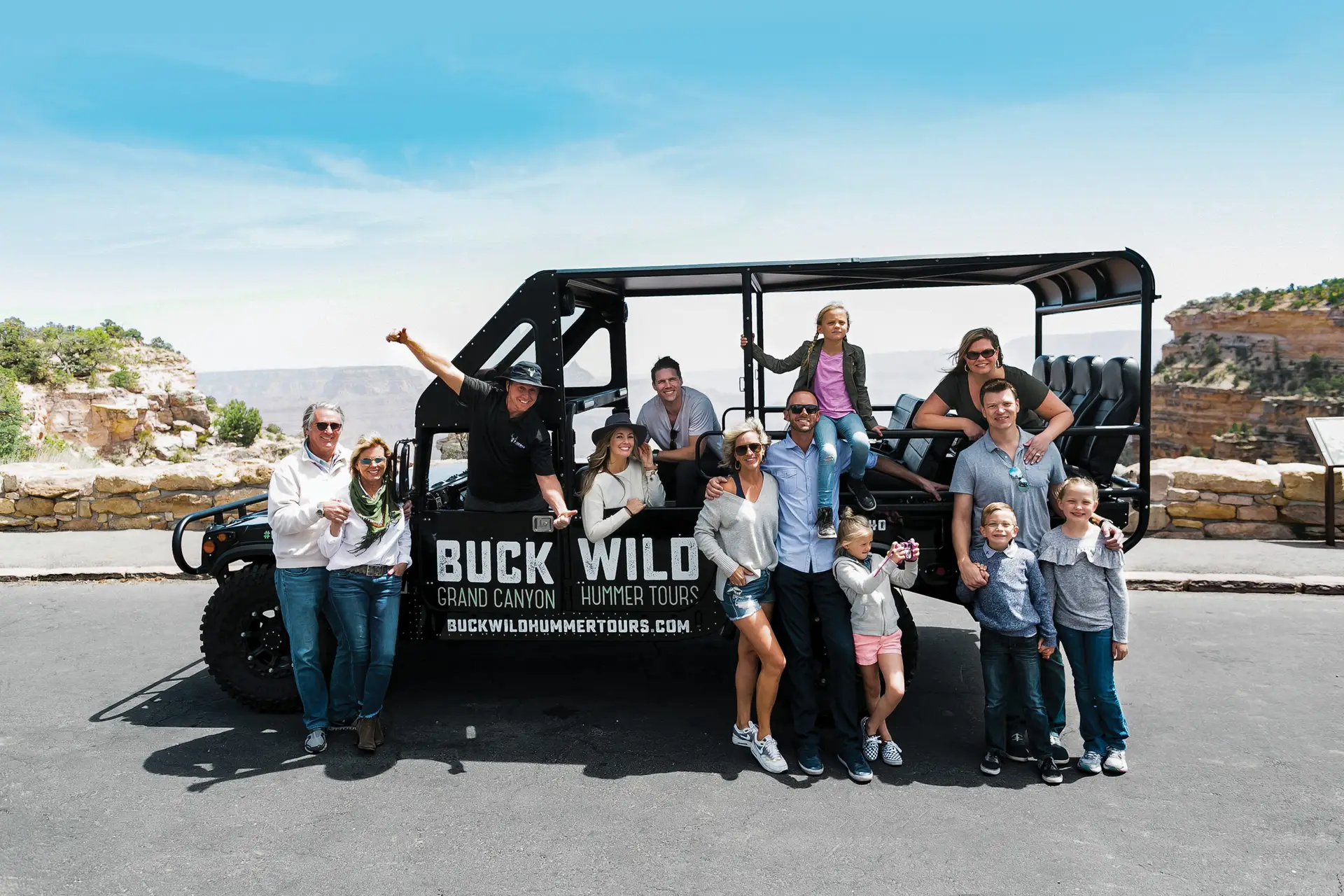The single most important thing you should know is that if you are thinking about hiking to the bottom of the canyon and back on the spur of the moment, YOU ARE NOT PREPARED FOR THAT. Hiking to the bottom of the rim and back requires planning, advanced training and should NOT be attempted as a casual, last minute ‘let’s go take a hike’ activity. Each year, more than 200 people need to be rescued from the Grand Canyon, and this is something that is costly and dangerous for the rescuers, and something that is almost completely preventable if hikers follow the recommendations of the NPS for hiking in the Grand Canyon.
There ARE no ‘easy’ trails into or out the canyon, and every hike should involve research, planning, and more planning.
RIM HIKES
Rim Hiking is the best way for the majority of visitors to enjoy a relatively ‘easy’ hike at the Grand Canyon South Rim. Rim Hiking simply means taking advantage of the amazing trails located on the rim that provide multiple access points, amazing viewpoints, and do not require advance training, planning or preparation. The Rim Trail offers excellent walking for quiet views of the inner canyon.
The entire Rim Trail stretches from the South Kaibab Trailhead west to Hermits Rest, a distance of approximately 13 miles (21 km). Most of the trail is paved.
Trail of Time
The Trail of Time is an EXCELLENT Rim Hike and is a great trail for most people, offering excellent viewpoints and educational information.
The Trail of Time is approximately 2.83 miles long (4.56 km), is paved and mostly flat, and each meter walked represents 1 million years of geologic history of the Grand Canyon.
The start of the Trail of Time is at Yavapai Geology Museum, a half hour walk from Mather Point and the Canyon View Visitor Center. The trail continues to Grand Canyon Village and beyond. One can stop in the Village or keep walking out towards Hermits Rest.
The Trail of Time exhibit is designed to be an accessible way to view the Grand Canyon and catch people at a moment when they are inspired with the grandeur of the canyon, and want to understand more about how the landscape was shaped by geologic events.
Below the Rim Hiking
Hiking below the rim CAN be an enjoyable experience, or it can be a nightmare if you are not adequately prepared. If you plan to venture below the rim, you must be prepared for all eventualities.
PLEASE remember to realistically plan your hiking, as it generally takes twice as long to hike OUT as it does to hike IN. Research your trail and plan accordingly if you are hiking below the rim.
Bright Angel Trail
The most popular hiking trail into Grand Canyon, the Bright Angel Trail lets hikers walk in the footsteps of the canyon’s Indigenous Peoples, miners, and early tourists, as they descend into the canyon’s depths.
South Kaibab Trail
The South Kaibab Trail is a well-defined, well-maintained dirt trail offering wonderful expansive views. This can be a great trail for short trips into the canyon of half a day or less.
Grandview Trail
Built in 1893 as a mining route, this rocky, exposed, and strenuous trail requires caution. Large steps and extreme drop-offs intensify the steepness of the trail. Upper portions of the Grandview Trail can be extremely icy in winter and early spring—use over-the shoe traction devices.
Hermit Trail
Built in 1911, this rocky, strenuous trail drops steeply the first 2.5 miles-use caution. In winter, its southern exposure features less snow and ice, but you should still bring over-the-shoe traction devices for hiking the Hermit Trail in winter.
Backcountry Permits
If you wish to camp anywhere in the park, other than in developed campgrounds on the North Rim or the South Rim, you must obtain a permit from the Backcountry Information Center located inside the park. See below for QR Code to save Google Map to your phone.
A backcountry permit is required for:
- overnight camping outside of Mather Campground, Desert View Campground, and North Rim Campground
- overnight camping in all sites at Tuweep Campground
- overnight camping anywhere on the North Rim of Grand Canyon National Park between Oct 16 – May 14 (includes ski-camping)
- off-river camping by river trip participants
- overnight camping with private stock outside of Mather Campground (May 15 – Oct 15) overnight camping with private stock outside of the North Rim Campground June 9 – Oct 15, 2023.
- packrafting, other than that which occurs under a river permit
A backcountry permit is NOT required for:
- day hikes
- day stock rides
- overnight camping at Mather Campground and Desert View Campground (campground reservations for Mather Campground at www.recreation.gov)
- overnight camping at North Rim Campground between June 9 – Oct 15, 2023. (campground reservations at www.recreation.gov)
- overnight camping with private stock at Mather Campground (May 15 – Oct 15) or the North Rim Campground June 9 – Oct 15, 2023.
- overnight stays at the dormitories or cabins at Phantom Ranch (advanced reservations with Grand Canyon National Park Lodges required)





















